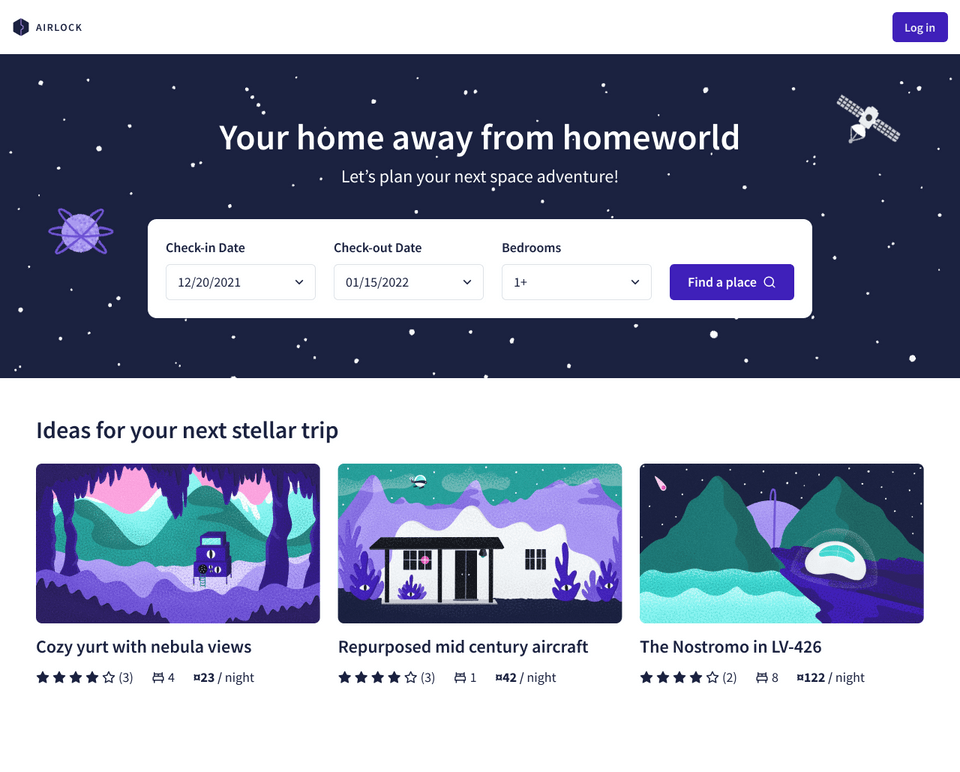👋 Welcome to data loaders with Apollo Server & TypeScript!
We're excited you're here! Together we'll set our sights on improving performance in our GraphQL applications, zooming in on the best practice of using data loaders. We've got lots of hands-on opportunities ahead, and you'll find quizzes and challenges to test your understanding as we tackle this topic.
In this course, we'll address one of the sneaky performance problems that can appear in GraphQL projects: the n+1 problem. Once we understand how this problem occurs, we'll implement the solution using data loaders. We'll walk through the steps of implementing and using data loaders in our TypeScript project, and see the direct effect they have on our app's performance.
Let's jump in!
What we're building
To explore this topic, we'll build on top of an existing GraphQL app called: Airlock.

Airlock is an intergalactic trip booking app: a resource we can use to find a cool place to stay in the wide open universe! We built the basics of this GraphQL server in the Intro to GraphQL course.
But don't worry—you don't need to have completed the first course before starting! We'll give you a fresh repo to clone, and walk you through all the steps to get data loaders up and running.
Let's get everything ready to start building!
Project setup
To follow along with the course, you will need the following:
Prerequisite knowledge
We assume that you are familiar with GraphQL concepts like types, queries, and mutations. Check out our Intro to GraphQL with Apollo Server & TypeScript course if you need a refresher.
You should also be familiar with TypeScript programming concepts.
Code editor or IDE
We're using VS Code.
Many popular IDEs offer plugins that enable GraphQL syntax highlighting. For VS Code, we recommend the GraphQL: Syntax Highlighting extension.
Clone the repository
This course picks up where Intro to GraphQL with Apollo Server & TypeScript left off, but completing it first isn't a prerequisite! To start fresh, run the following command.
git clone https://github.com/apollographql-education/odyssey-dataloaders-typescript.git
Running the app
Finally, let's get our server up and running.
Navigate to the root directory in your terminal, and run the following commands.
First, to install packages:
npm install
Next, to boot up the server:
npm run dev
Shortly after, we should see in the terminal that our app is running!
🚀 Server is running📭 Query at http://localhost:4000/
Up next
Let's get into data loaders, the problem they solve, and how we bring them into our application.
Share your questions and comments about this lesson
Your feedback helps us improve! If you're stuck or confused, let us know and we'll help you out. All comments are public and must follow the Apollo Code of Conduct. Note that comments that have been resolved or addressed may be removed.
You'll need a GitHub account to post below. Don't have one? Post in our Odyssey forum instead.